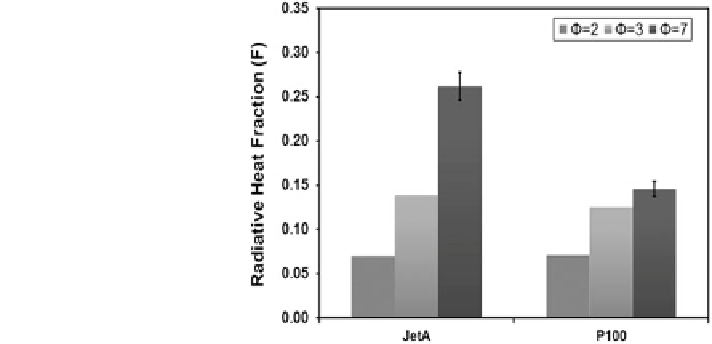Environmental Engineering Reference
In-Depth Information
Fig. 6 Radiative fraction of
heat release of Jet A and P100
flames
than that in the Jet A
fl
flames, the CO concentration was higher at 25 and 50 %
fl
ame
heights for the PME
flames, resulting in more gas radiation. The radiative fraction
of heat release in the PME
fl
fl
flame was lower (almost one-half) than that of the Jet A
fl
flames at the equivalence ratio of 7, because of lower soot concentration and
comparable gas concentration.
5.4 In-Flame Temperature Pro
les
The in-
fl
ame temperature pro
les (Fig.
7
a
c) displayed a double-hump pro
le, with
-
the peak temperature occurring about 6
-
8 mm away from the centerline at 25 %
fl
flame height (FL). The maximum value shifted to the centerline by mid-
fl
ame
height due to entrainment and mixing. The peak temperatures at 25 %
fl
flame height
were comparable in the Jet A and P100
flames. As the equivalence ratio was
increased, the peak temperature was reduced due to mixing with the entrained cool
room air. The temperature at 75 %
fl
fl
flame height in the PME
fl
flames was lower than
that of the Jet A
flames at equivalence ratios of 2 and 3; the values were comparable
at the equivalence ratio of 7. The differences in the diameter of soot particles
formed in the PME and Jet A
fl
flames and the opposing effects of soot burning and
radiative loss from the soot particles could be a reason for this behavior. Previous
studies (Merchan-Merchan et al.
2012
) have shown that the soot particles formed in
canola methyl ester
fl
fl
flames were one-half the size of diesel soot and those formed in

Search WWH ::

Custom Search